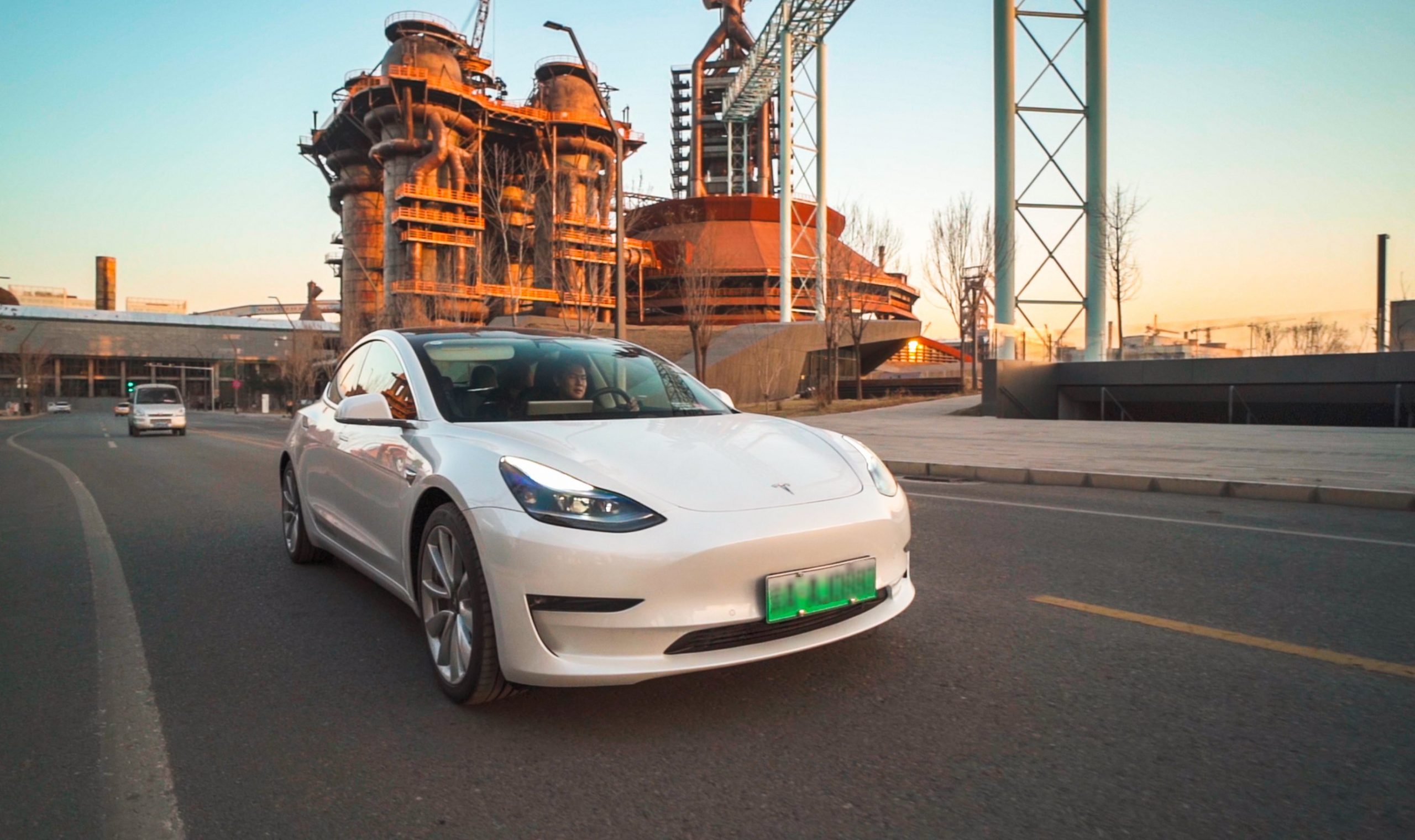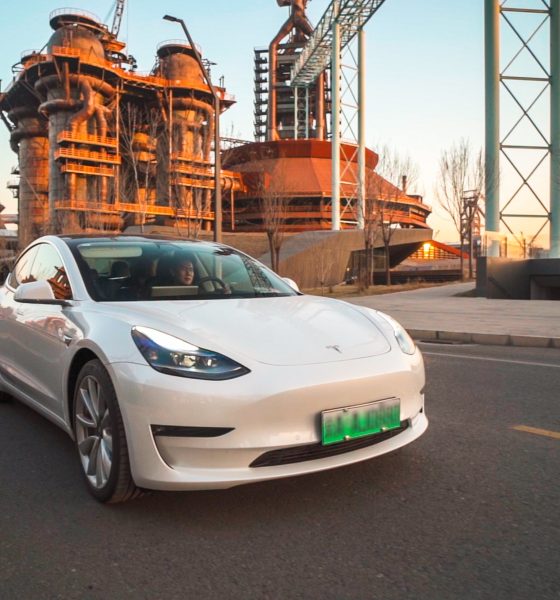

News
Tesla skeptics are hung up about its $465M paid loan, but the fossil fuel industry gets $11M of subsidies every minute
With Elon Musk speaking out about the Biden administration’s recent intentions to tax unrealized gains, it has become a frequent sight on social media for Tesla skeptics and bears to bring up the fact that the EV maker would not exist if the Obama administration did not loan $465 million to Tesla to keep it afloat. This “bailout,” which is how Tesla critics typically dub the $465 million loan, had been paid by the company a full nine years early — and with interest.
What is interesting is that in the grand scheme of things, Tesla’s $465 million loan from the Obama administration is but a drop in the bucket, at least compared to the subsidies that are currently enjoyed by the fossil fuel industry. As per a comprehensive report from the International Monetary Fund (IMF), the fossil fuel industry currently benefits from subsidies of $11 million per minute. That’s a whopping $5.9 trillion worth of subsidies granted for the production and burning of coal, oil, and gas in 2020.
As per the IMF report, setting fossil fuel prices that actually reflect their true cost could cut worldwide CO2 emissions by over 30%, and thus, it would be a substantial step towards meeting the internationally agreed 1.5C target. Ensuring that such a target is still within reach is a goal of the UN’s Cop26 climate summit this coming November. Interestingly enough, among the Cop26’s goal is to agree on rules for carbon markets, which would enable the appropriate pricing for pollution, as per a report from The Guardian.
Ian Parry, the lead author of the IMF report, noted that a reform on how the fossil fuel industry is currently subsidized could result in massive benefits. “There would be enormous benefits from reform, so there’s an enormous amount at stake. Some countries are reluctant to raise energy prices because they think it will harm the poor. But holding down fossil fuel prices is a highly inefficient way to help the poor because most of the benefits accrue to wealthier households. It would be better to target resources towards helping poor and vulnerable people directly,” Parry noted.
Mike Coffin, a senior analyst at Carbon Tracker, a think tank, agreed with this sentiment, noting that it’s crucial for governments to stop supporting an industry that’s already in decline anyway. “To stabilize global temperatures, we must urgently move away from fossil fuels instead of adding fuel to the fire. It’s critical that governments stop propping up an industry that is in decline and look to accelerate the low-carbon energy transition and our future, instead,” Coffin stated.
Tesla CEO Elon Musk has noted in the past that he actually feels bad about people who have made their career in the oil and gas industry. Musk has also made it clear that he is a proponent of a carbon tax, which his companies such as SpaceX would gladly pay. According to the Tesla CEO, however, the Biden administration was hesitant about his proposal.
“I talked to the Biden administration, and they were like ‘Well, this seems too politically difficult.’ And I was like, ‘Well, this is obviously a thing that should happen.’ And by the way, SpaceX would be paying a carbon tax too. So I’m like, you know, I’m like, I think we should pay it too. It’s not like we shouldn’t have carbon generating things. It’s just that there’s got to be a price on this stuff,” Musk said.
Read the IMF’s comprehensive report below.
IMF – Still Not Getting Energy Prices Right: A Global and Country Update of Fossil Fuel Subsidies by Simon Alvarez on Scribd
Don’t hesitate to contact us with news tips. Just send a message to tips@teslarati.com to give us a heads up.

Elon Musk
Elon Musk’s X will start using a Tesla-like software update strategy
The initiative seems designed to accelerate updates to the social media platform, while maintaining maximum transparency.

Elon Musk’s social media platform X will adopt a Tesla-esque approach to software updates for its algorithm.
The initiative seems designed to accelerate updates to the social media platform, while maintaining maximum transparency.
X’s updates to its updates
As per Musk in a post on X, the social media company will be making a new algorithm to determine what organic and advertising posts are recommended to users. These updates would then be repeated every four weeks.
“We will make the new 𝕏 algorithm, including all code used to determine what organic and advertising posts are recommended to users, open source in 7 days. This will be repeated every 4 weeks, with comprehensive developer notes, to help you understand what changed,” Musk wrote in his post.
The initiative somewhat mirrors Tesla’s over-the-air update model, where vehicle software is regularly refined and pushed to users with detailed release notes. This should allow users to better understand the details of X’s every update and foster a healthy feedback loop for the social media platform.
xAI and X
X, formerly Twitter, has been acquired by Elon Musk’s artificial intelligence startup, xAI last year. Since then, xAI has seen a rapid rise in valuation. Following the company’s the company’s upsized $20 billion Series E funding round, estimates now suggest that xAI is worth tens about $230 to $235 billion. That’s several times larger than Tesla when Elon Musk received his controversial 2018 CEO Performance Award.
As per xAI, the Series E funding round attracted a diverse group of investors, including Valor Equity Partners, Stepstone Group, Fidelity Management & Research Company, Qatar Investment Authority, MGX, and Baron Capital Group, among others. Strategic partners NVIDIA and Cisco Investments also continued support for building the world’s largest GPU clusters.
News
Tesla FSD Supervised wins MotorTrend’s Best Driver Assistance Award
The decision marks a notable reversal for the publication from prior years, with judges citing major real-world improvements that pushed Tesla’s latest FSD software ahead of every competing ADAS system.

Tesla’s Full Self-Driving (Supervised) system has been named the best driver-assistance technology on the market, earning top honors at the 2026 MotorTrend Best Tech Awards.
The decision marks a notable reversal for the publication from prior years, with judges citing major real-world improvements that pushed Tesla’s latest FSD software ahead of every competing ADAS system. And it wasn’t even close.
MotorTrend reverses course
MotorTrend awarded Tesla FSD (Supervised) its 2026 Best Tech Driver Assistance title after extensive testing of the latest v14 software. The publication acknowledged that it had previously criticized earlier versions of FSD for erratic behavior and near-miss incidents, ultimately favoring rivals such as GM’s Super Cruise in earlier evaluations.
According to MotorTrend, the newest iteration of FSD resolved many of those shortcomings. Testers said v14 showed far smoother behavior in complex urban scenarios, including unprotected left turns, traffic circles, emergency vehicles, and dense city streets. While the system still requires constant driver supervision, judges concluded that no other advanced driver-assistance system currently matches its breadth of capability.
Unlike rival systems that rely on combinations of cameras, radar, lidar, and mapped highways, Tesla’s FSD operates using a camera-only approach and is capable of driving on city streets, rural roads, and freeways. MotorTrend stated that pure utility, the ability to handle nearly all road types, ultimately separated FSD from competitors like Ford BlueCruise, GM Super Cruise, and BMW’s Highway Assistant.
High cost and high capability
MotorTrend also addressed FSD’s pricing, which remains significantly higher than rival systems. Tesla currently charges $8,000 for a one-time purchase or $99 per month for a subscription, compared with far lower upfront and subscription costs from other automakers. The publication noted that the premium is justified given FSD’s unmatched scope and continuous software evolution.
Safety remained a central focus of the evaluation. While testers reported collision-free operation over thousands of miles, they noted ongoing concerns around FSD’s configurable driving modes, including options that allow aggressive driving and speeds beyond posted limits. MotorTrend emphasized that, like all Level 2 systems, FSD still depends on a fully attentive human driver at all times.
Despite those caveats, the publication concluded that Tesla’s rapid software progress fundamentally reshaped the competitive landscape. For drivers seeking the most capable hands-on driver-assistance system available today, MotorTrend concluded Tesla FSD (Supervised) now stands alone at the top.
News
Elon Musk’s Grokipedia surges to 5.6M articles, almost 79% of English Wikipedia
The explosive growth marks a major milestone for the AI-powered online encyclopedia, which was launched by Elon Musk’s xAI just months ago.

Elon Musk’s Grokipedia has grown to an impressive 5,615,201 articles as of today, closing in on 79% of the English Wikipedia’s current total of 7,119,376 articles.
The explosive growth marks a major milestone for the AI-powered online encyclopedia, which was launched by Elon Musk’s xAI just months ago. Needless to say, it would only be a matter of time before Grokipedia exceeds English Wikipedia in sheer volume.
Grokipedia’s rapid growth
xAI’s vision for Grokipedia emphasizes neutrality, while Grok’s reasoning capabilities allow for fast drafting and fact-checking. When Elon Musk announced the initiative in late September 2025, he noted that Grokipedia would be an improvement to Wikipedia because it would be designed to avoid bias.
At the time, Musk noted that Grokipedia “is a necessary step towards the xAI goal of understanding the Universe.”
Grokipedia was launched in late October, and while xAI was careful to list it only as Version 0.1 at the time, the online encyclopedia immediately earned praise. Wikipedia co-founder Larry Sanger highlighted the project’s innovative approach, noting how it leverages AI to fill knowledge gaps and enable rapid updates. Netizens also observed how Grokipedia tends to present articles in a more objective manner compared to Wikipedia, which is edited by humans.
Elon Musk’s ambitious plans
With 5,615,201 total articles, Grokipedia has now grown to almost 79% of English Wikipedia’s article base. This is incredibly quick, though Grokipedia remains text-only for now. xAI, for its part, has now updated the online encyclopedia’s iteration to v0.2.
Elon Musk has shared bold ideas for Grokipedia, including sending a record of the entire knowledge base to space as part of xAI’s mission to preserve and expand human understanding. At some point, Musk stated that Grokipedia will be renamed to Encyclopedia Galactica, and it will be sent to the cosmos.
“When Grokipedia is good enough (long way to go), we will change the name to Encyclopedia Galactica. It will be an open source distillation of all knowledge, including audio, images and video. Join xAI to help build the sci-fi version of the Library of Alexandria!” Musk wrote, adding in a later post that “Copies will be etched in stone and sent to the Moon, Mars and beyond. This time, it will not be lost.”








